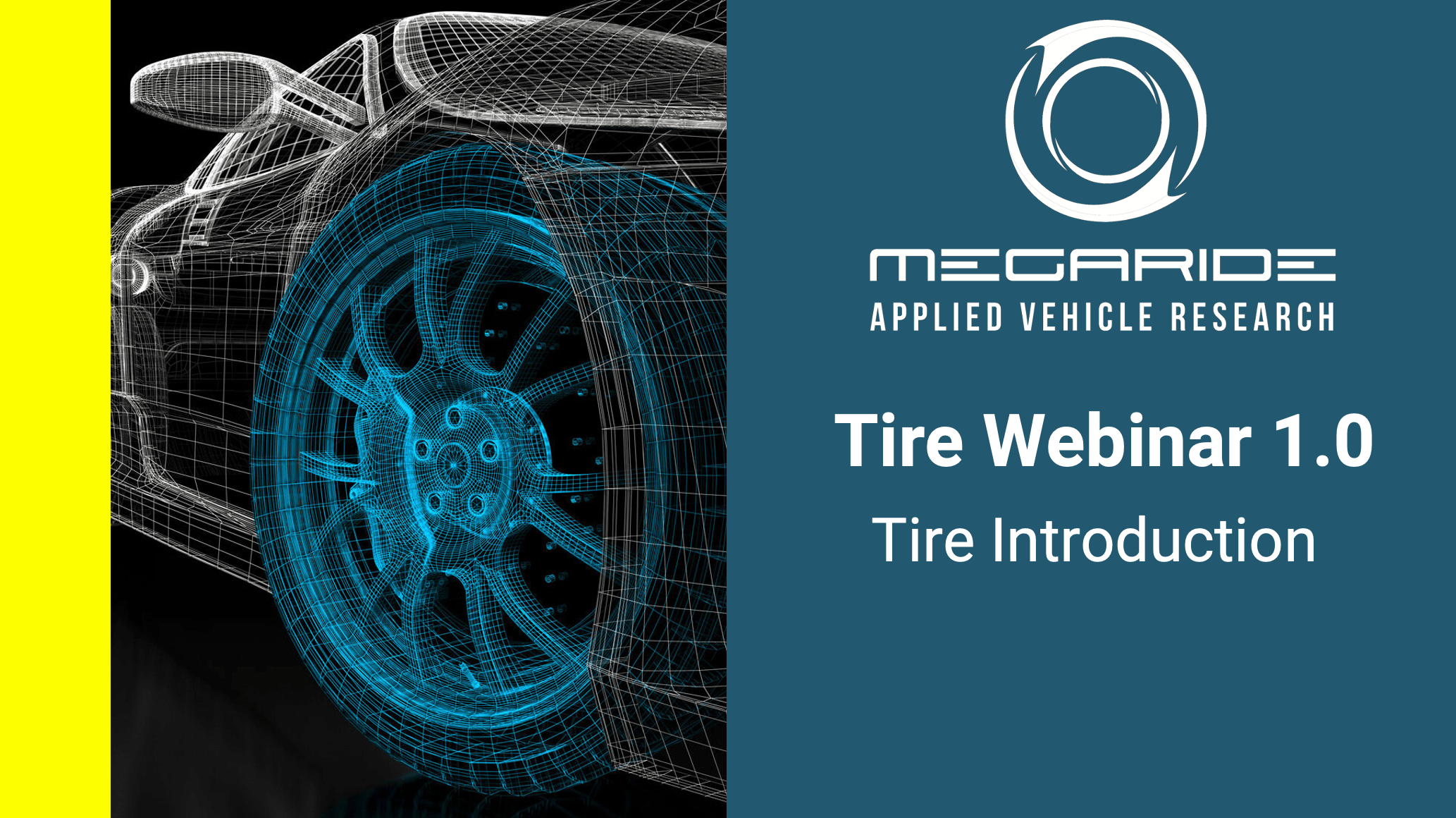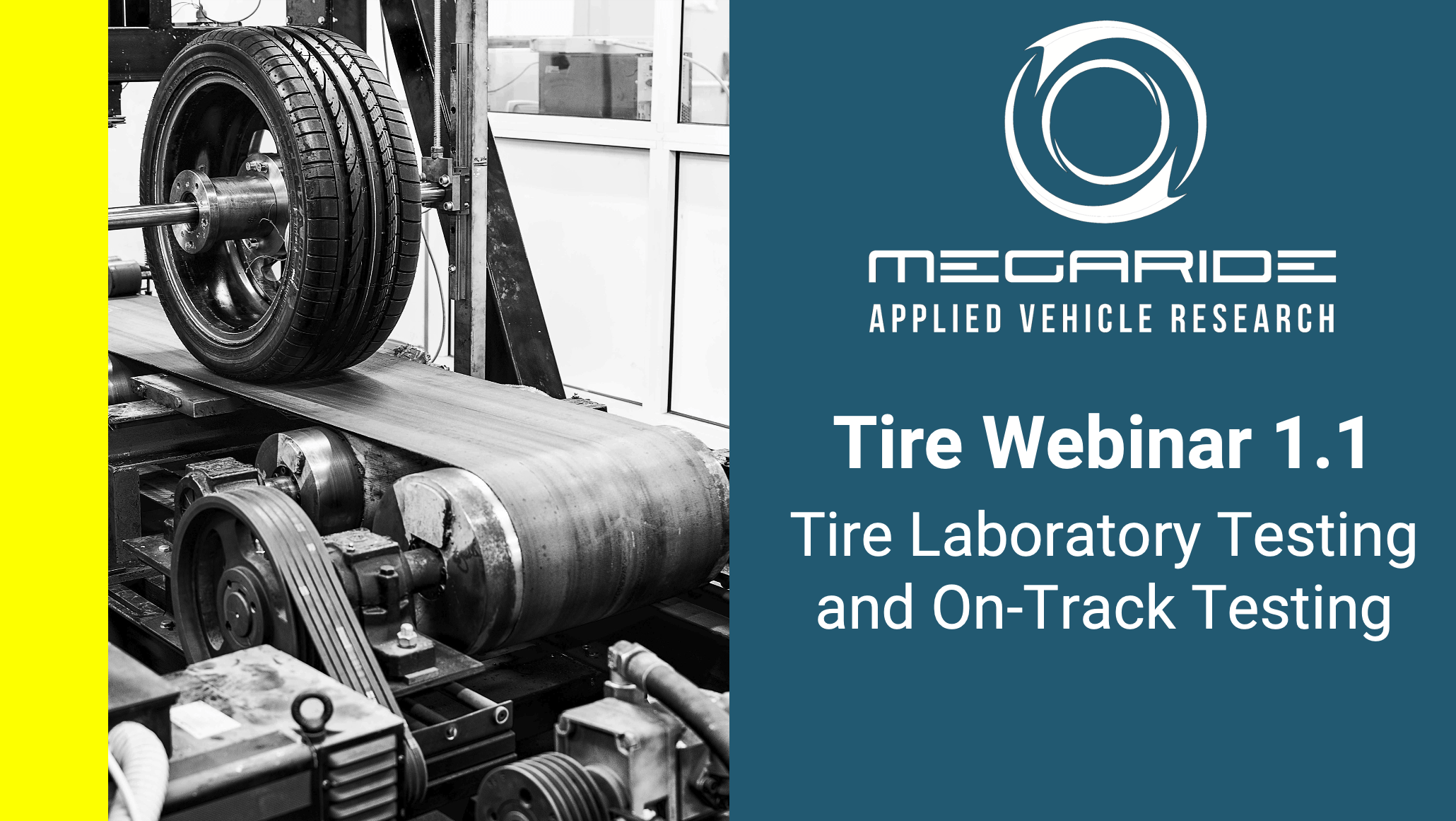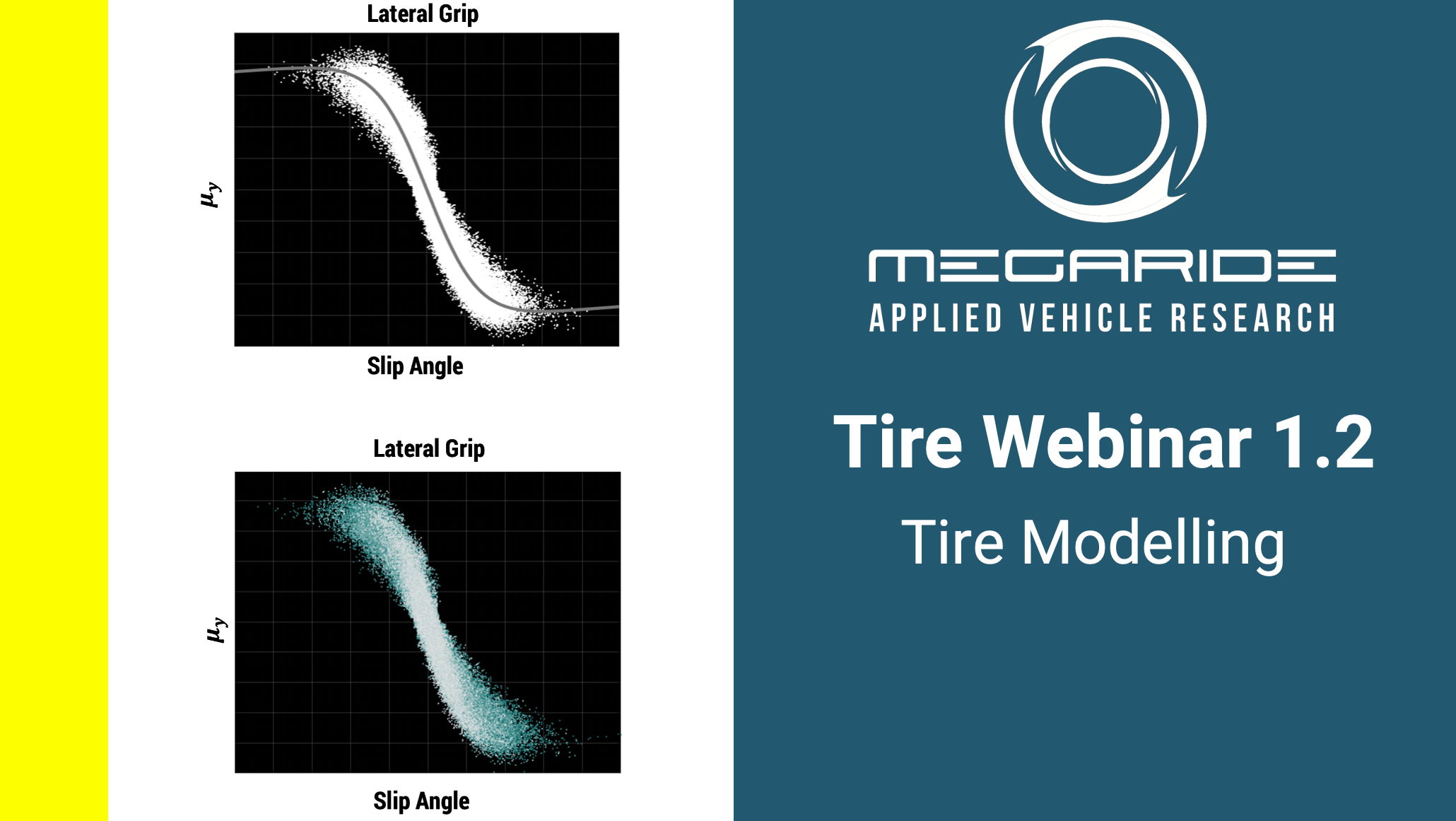Thanks to many years of research and working in the various automotive fields, MegaRide developed high impact, industry-applicable training programs to push your companies knowledge to the next level. Our mission is to provide a direct link between academia and the automotive and motorsport industry. In every training, our focus is to transfer our knowledge and tools to tackle some of the hardest vehicle development, testing and simulation issues.
MegaRide offers seminars, webinars and corporate training. These sessions can be offered as short trainings or more intensive sessions.
Our current webinar series is on tires. Be sure to check out the website, as we will update it throughout the year!
Begin your journey in the field of vehicle dynamics! This webinar introduces one of the most complex systems to model: tires! The course starts with an introduction to the basics of tire forces and moments. We will also dive into how forces and moments are generated, how quantities such as slip angle, split ratio, camber, forces and moments are measured, how tire data is visualized and which metrics are used to quantify the forces and moments of the tire. The webinar concludes with an exercise to connect how the tire metrics affect the vehicle behaviour.
- Definitions
- Forces and Moments
- Tire Data
- Tire Forces & Moments Metrics
- Tire Metrics and Vehicle Dynamic Behavior
- Bachelors
- Notion of: Forces, moments and coordinate systems

If you have ever done any vehicle simulation you know that the most sensitive sub-system is the tire. However, tires remain one of the most difficult systems to model, relying greatly on laboratory and on-track testing.
Physically testing all of the possible configurations becomes impossible both in terms of time and budget. Thus, it becomes important to know within which conditions you should test your tire and how to correlate laboratory with on-track testing. Learn the requirements, advantages and disadvantages between laboratory and on-track testing, how to prepare a tire test, how to read the data and how to create a model.
- How to obtain tire data?
- Laboratory tire testing
- Outdoor tire testing
- Which test is appropriate for your application?
- Setting up a tire test
- Recommend to have attended Tire Webinar 1.1

Since the MF model is strongly data-driven, it must be properly parameterized so that it can be accurate and predictive in reproducing tire behavior in its whole operating range. To obtain a tire model, it is necessary to get forces and moments, measured from either indoor or outdoor acquisitions. With the data acquired, the next phase is to process the acquired data on which the model will then be fitted.
In this seminar, we will look at how to fit a tire model, how a model can be improved by changing the boundary constraints, population size, iteration number, and stop criteria. We will compare good and bad tire models, and investigate what can be done to improve the model. We will look at tire fitting pitfalls that could make the vehicle simulation inaccurate, and what options can be used to solve it.
- Tire models
- Why to model
- How to choose a tire model
- How to fit a tire model from tire data
- How to plot tire data
- Creating an equation to see tire plots
- Laboratory tire testing report
- Recommended to attend Tire Webinar 1.1 and 1.2

Vehicle testing is complex, and both time and money consuming. As a user you need to rent a proving ground or a track, define what needs to be measured, select the necessary sensors and install them.
One of the most common vehicle tests is an on-track test used to obtain tire data and correlation. In this test, the car is equipped with sensors to measure variables such as slip angle, slip ratio, camber, speed, etc. The car must be driven with predefined steering and throttle inputs to collect tire data. The collected data is then used to a) obtain a tire model and b) correlate tire models obtained from laboratory testing.
The quality of the acquired data is highly dependent on how the procedure is done and the data analyzed. To successfully obtain tire model correlation, it’s necessary to have a clear methodology, sensors and the correct driving maneuvers for the chosen track. Vehicle models can be used to estimate vehicle states, such as camber, vertical load, tire forces, etc. Vehicle models improve the quality of the data acquired, further increasing the test’s success.
- Vehicle model
- Which model to use
- How to create the vehicle model
- Minimum number of sensors need to obtain a tire model
- Outdoor tire testing
- Recommended to have attended the 1.0, 1.1, 1.2 tire webinar

FAQ
Where can I find more details about the webinars? / I’m not sure which webinar I should attend.
Are there any particular topics that you are looking for? We are available for a quick 15min call to discuss the contents of the webinars, and together decide which webinars would better fit your needs. Please send an email to training@megaride.eu to request this call.
Will I obtain a certificate?
We will provide a certificate of attendance.
Which course materials will be provided? (papers, webinar recording, data, etc.)
We will provide a pdf with the slides and the webinar will be recorded and share with the attendees.
Will we be using any software?
You do not need to install any software prior, we will show some examples using python and excel, but you don’t need to have them installed.
Is there a limit on how many people can attend the webinar?
To ensure that attendees have a smooth and personalized experience, we are limiting the webinar to 20 people.
What happens if I’m not able to attend on the day or I have trouble connecting to the webinar?
The webinar will be recorded. I can you have trouble connecting you can re-watch the recording. If you missed the majority of the webinar, we are happy to automatically add you, free of charge, to the next webinar series on tires!
In which platform will the webinar be hosted?
The webinar will be hosted on Microsoft Teams. Each webinar will have it’s own link.